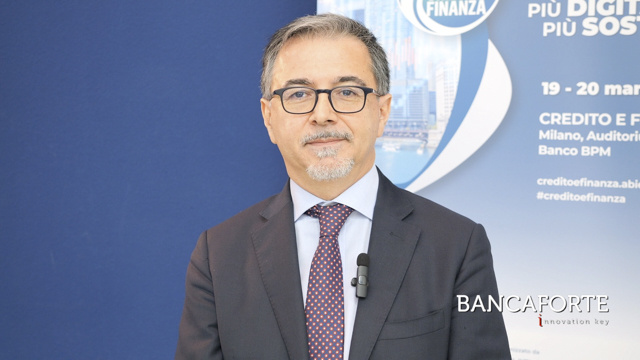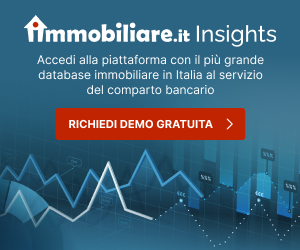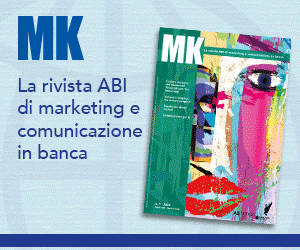25 Aprile 2024 / 14:39
Trend topics
Imprese
UN/CEFACT, strumenti e standard per semplicare il commercio internazionale
di Mike Doran (UN/CEFACT)
-
19 Luglio 2012
Organizzazione, funzionamento e attività del Centro delle Nazioni Unite focalizzato sulla facilitazione del commercio internazionale e sullo sviluppo del business elettronico
Introduction
Economic growth is a clear priority for Governments and a primary basis for achieving the social and well-being of their citizens. Greater participation in international trade has long been identified as an essential element in attaining this objective. Governments and international organisations worldwide have undertaken significant work to establish an expanded international trading system based, inter alia, on reduced tariffs and liberalised trade policies.
International trade is however a complex business, especially because of the numerous official procedures and requirements that exporters and importers have to meet. This adds time and cost to trade transactions, and often deters business, especially small and medium enterprises from entering international markets. Trade facilitation attempts to address such constraints by making trade as easy and efficient as possible for business and governments. It reduces costs, enhances competitiveness and contributes to the growth of global commerce.
The mission of UN/CEFACT is to respond to these challenges.
The role of the United Nations
When simplified and standardized export documents were introduced in Sweden in 1957, it was felt that this initiative would be of real value only if it could be extended to cover trade in general at an international level. Although co-operation was established with the other Nordic countries, this only involved one limited region of Europe and would not cover other important trading partner countries. Attempts therefore were made to find an international body that could assume responsibility for a real international effort to simplify and standardize unwieldy and cumbersome trade documents and procedures.
It was therefore natural that one of the first international bodies to be approached was the International Standards Organization (ISO). However, it turned out that ISO at that time was not engaged in administrative standardization and had no mandate or resources to carry out a task that essentially involved negotiations regarding national legal requirements and international trading practices.
Having considered all available options, Sweden, supported by the other Nordic countries, brought the matter before the UNECE in 1960, where it was agreed to set up a Working Party, initially restricted to trade document standardization was later mandated to deal with trade facilitation in general and the development of electronic business standards and technical specifications.
Within the United Nations framework of the Economic and Social Council, the United Nations Economic Commission for Europe (UNECE) serves as the focal point for trade facilitation recommendations and electronic business standards, covering both commercial and government business processes that can foster growth in international trade and related services. In this context, the United Nations Centre for Trade Facilitation and Electronic
Business (UN/CEFACT) was established, to achieve improved worldwide coordination and
cooperation in these areas.
Where does UN/CEFACT fit within the UN?
UN/CEFACT is a subsidiary, intergovernmental body of the UNECE Committee on Trade, to which it reports. UN/CEFACT is mandated to develop trade facilitation recommendations
and eBusiness standards in a programme of work of global relevance. The policy directions and programme of work of UN/CEFACT are approved by its inter-governmental Plenary that meets once a year at the UN in Geneva, Switzerland.
See
The structure of UN/CEFACT
The UN/CEFACT Plenary consists of UN member States, international organisations, non-governmental organisations, standard development organisations and stakeholders from the private sector.
The Plenary has a Bureau which is elected by the Plenary and is responsible for the implementation of the decisions of the Plenary and the day to day management of UN/CEFACT.
In 2009 UN/CEFACT carried out a Gap Analysis which collected community feedback to identify the required products for UN/CEFACT for the future and the methods for achieving them. From these the 2010 Plenary accepted ‘the way forward’ recommendations in principle. These involved three components:
In July 2011 the UN/CEFACT Plenary approved a new organizational structure and revised internal procedures designed to simplify the standards development process and to promote a more effective streamlined management and project-oriented framework. The revised technical framework was to be addressed in 2012.
The new structure is based on two sets of activities supporting the Plenary-approved Programme of Work (PoW):
(1) Programme Development Areas (PDAs)
(2) Project Teams (PTs).
Regional Rapporteurs and the UNECE secretariat are also engaged in activities that can contribute to achieving PoW deliverables.
The Programme Development Areas consist of business and technical domains in which projects are prepared. UN/CEFACT projects are carried out by Project Teams of experts. The PDAs aim to bring enhanced forward looking coherence in addressing key Programme of Work themes, taking measures to ensure that projects that are proposed are consistent with the overall UN/CEFACT vision as articulated into deliverables that can be completed on a timely basis.
By raising the preparation and monitoring to an ongoing strategic level, it is envisaged that this can open up opportunities for member States and stakeholders in the public and private sectors to work with UN/CEFACT in areas where it can add value, particularly in the
context of its intergovernmental mandate. Both a top-down and bottom-up approach to the
formulation of the Programme of Work are expected to also foster enhanced possibilities for the development of new recommendations and standards in the field of trade facilitation and electronic business.
Business Domains & Experts
Business domain and technical experts from five continents provide the knowledge, skills
and experience to identify, formulate and carry out projects in the Programme of Work. Experts are nominated by Plenary Heads of Delegation and contribute as independent professionals, without representing the special interests of their country or organisations.
Twice a year all the experts come together at the UN/CEFACT Forums, which are held at different locations throughout the world. The Forums are indispensable for progressing the work on projects and fostering peer group collaboration, within and across Programme Development Areas. They also facilitate consideration of cross-domain coordination, strategic thinking and the formulation of new projects. Parallel sessions are provided for promotion and capacity-building for UNECE recommendations and UN/CEFACT standards.
Expert activities associated with Domains are another key aspect of fostering the continuity of the public-private partnership. In creating a Registry of Domains with the following coverage, UN/CEFACT has sought to maintain as much of this fundamental part of its multidimensional approach to developing recommendations and standards as possible:
Programme Development Areas
UN/CEFACT has created five Programme Development Areas with related business or technical domains in order to provide a reasonable division of scope with respect to the Programme of Work. These are:
See
General overview of UN/CEFACT work
UN/CEFACT’s Integrated Strategy
UN/CEFACT’s integrated strategy is the starting point for much that is covered in the Programme of Work. It is reviewed annually to respond to the needs required for safe and reliable trade processes in order to be able to monitor and control the effective and efficient flow of goods from origin to destination.
For a product to remain competitive on foreign markets, the cost of the commercial transactions must be as low as possible. The tools of Supply Chain Management, which attempt to deal with the whole series of activities involved in trading goods, are essential in this regard. However, they need to be complemented by effective procedures and standards at national frontiers, so that the goods can be delivered and the payments executed, without unforeseen or undue delays and unexpected additional costs.
This approach clearly widens the scope of trade facilitation. From an issue focusing on commercial documentation and Customs procedures, it extends to the activities between the seller and the buyer. To assist in analyzing and understanding processes, procedures and transactions, the Centre developed a Reference Model of the International Supply Chain. This provides a high-level view of the activities involved in international trade transaction
process.
The model can be represented by three trade and business process areas: "Buy", "Ship" and "Pay".
The graphical representation of the Model, along with an outline of the Commercial, Transport, Regulatory and Financial procedures, is shown in the figure below.
UN/CEFACT Recommendations and Standards
Trade Facilitation Recommendations
Goods move across borders only as fast as the "paper" information that precedes them, and information costs can have an important impact on competitiveness. For landlocked countries and countries distant from major markets, complex and inefficient procedures can be a particular constraint, creating many additional costs in bringing goods to the market.
Business, trade operators and governments generate information as part of the processes associated with the movement of goods, transfer of services and related financial flows. National regulatory authorities amend or add formalities; in some cases without consideration of the effect such changes may have on the overall trading system. This can easily lead to incompatible or inefficient regulations, information requests and controls. Further, the use of non-standard, country- specific, and agency-specific data is inefficient as regards to the international exchange of information among trading partners. It increases the risk of errors and cost for both government and trade.
The consequence is often congestion at airports, seaports and inland surface terminals. This generates additional costs, estimated at 2-4% of the total value of world trade. These costs further discourage small and medium-sized enterprises (SMEs) from considering trading internationally.
New challenges are emerging for companies operating in international trade. They include, the requests for advance information imposed by security authorities, and the increasing complexity and geographic extension of international supply chains.
Trade facilitation aims at eliminating redundancies in the international trade and transport data that needs to be submitted to authorities. Further, it seeks to simplify national and international trade and business processes such as ordering goods or payments.
Trade facilitation attempts to address such constraints by making trade as easy and efficient as possible for business and Governments. It reduces costs, enhances competitiveness and contributes to the growth of global commerce.
UN/CEFACT has delivered a series of 35 Recommendations to date which cover a wide range of activities starting with documentary requirements, which led to the publication of:
Recommendation 1
- the United Nations Layout Key for Trade Documents (the international standard for the layout and content of trade documents which have been in use worldwide for more than forty years).
More recently a suite of Single Window Recommendations have been published, consisting of:
Recommendation 33
– Recommendations and Guidelines for Establishing a Single Window
Recommendation 34
– Data Simplification and Standardization for International Trade
Recommendation 35
– Establishing a Legal Framework for Single Windows
A new Recommendation on Interoperability for Single Windows is in the process of being developed.
All UN/CEFACT Recommendations are published in the Compendium of Trade Facilitation
Recommendations, available on the UN/CEFACT Website.
An important deliverable in 2012 will be the publication of the UNECE/UN/CEFACT Trade Facilitation Implementation Guide, a modular guide, complemented by training materials that support trade facilitation implementation in a structured manner.
Working with other key players involved in trade facilitation activities and organizations
involved in standards development, with a view to avoiding duplication of work and to building together an internationally consistent framework based on best practice.
An example, the Global Facilitation Partnership, which involves the following Core Partners: United Nations Conference on Trade and Development (UNCTAD), United Nations Economic Commission for Europe (UNECE), United Nations Industrial Development Organization (UNIDO), World Bank, World Customs Organization (WCO); and regional commissions of the United Nations.
eBusiness Standards
The advent of electronic commerce in the 1980s led to the development of
the UN/EDIFACT standard for Electronic Data Interchange for Administration, Commerce and Transport (ISO 9735). This UN/CEFACT standard is one of the most robust and widely used standards in use for over twenty years and still very much so today in application to application data interchange. UN/CEFACT maintains the UN/EDIFACT standard, as it does with all of its eBusiness standards. There are over 200 UN/EDIFACT messages which have been translated into 21 languages.
Another very important standard is the UN Trade Data Elements Directory (ISO 7372).
With the emergence of the World Wide Web new standards based on XML (eXtended Mark up Language) were required by the user community in addition to UN/EDIFACT and more recently, Web-EDI which has seen very impressive growth.
UN/CEFACT standards are developed based on cross-sectoral analysis (to promote interoperability & supply chain synchronicity) and use business process and information modelling (to capture user requirements). They are open standards, independent of any specific technology are available free of charge and are fully maintained.
In 2001, UN/CEFACT, together with OASIS (Organization for the Advancement of Structured Information Standards) developed the ebXML (eBusiness XML) set of standard which are also ISO 15000 series standards.
Building on the widely used standards such as the UN Layout Key, the UN Trade Data Elements Directory and UN/EDIFACT, UN/CEFACT has developed a complete methodology of technical specifications to develop the standards to automate business processes and integrate Internet technologies. These standards include the UN/CEFACT Modelling Methodology (UMM, based on UML), a methodology to analyze and codify business processes and data requirements, and Core Component Technical Specifications.
Core Components provide a syntax neutral way, which can describe both processes and data. They can be used to simplify business processes and to automate the data processing alike, thereby providing the opportunity to link the technology and the facilitation of trade. With the Core Component standard, the vision of an integrated supply chain information model becomes now feasible.
The UN/CEFACT Core Component library provides reusable definitions of data structures and semantics to define message structures in a syntax and technology neutral basis. By using UN/CEFACT Naming and Design Rules (NDR) these message structures can be transferred into a specific syntax such as XML.
Governments and regulatory agencies around the globe are increasingly (sometimes even
exclusively) focusing on electronic business using international, open standards rather than
domestic, national or proprietary standards. In these scenarios, processes in areas such as procurement, trade, taxation and payments require comprehensive and easy-to-use standard libraries. UN/CEFACT supports interoperability frameworks—including initiatives that focus on semantic libraries.
The constantly increasing growth of the Internet for online trade transactions involves the
use of efficient, trusted, reliable and secure information exchanges. This can be more effectively achieved globally through the use of internationally agreed shared libraries and dictionaries. In particular, organizations such as the World Trade Organization and the World Customs Organization have recognized that shared global libraries are of the utmost importance and UN/CEFACT regards these as its key assets.
UNECE recommendations and UN/CEFACT standards provide a coherent set of trade-facilitation instruments that increase efficiency and effectiveness, as well as encouraging small and medium-sized enterprises, and transition and developing economies, to extend their engagement in international trade.
To reduce costs and improve security, it is important to be able to process and communicate information in a completely unambiguous way, thereby providing clarity both internally and with external trading partners.
Regulators, government bodies and the general public are increasingly requesting the fullest protection possible from terrorism, hazardous materials, fraud, mistakes and accidents.
Some Recent UN/CEFACT Initiatives
In response to the EC Expert Group on eInvoicing, UN/CEFACT developed its Cross Industry Invoice (CII). The Message User Guidelines were produced by CEN (Comité Européene de Normalisation) led by UN/CEFACT experts. An additional six messages were also developed as part of this project including: CII catalogue, remittance advice, order, scheduling, delivery and quotation.
eProcurement is now a major area for the development of new messages. UN/CEFACT is currently working on eTendering and participates in the EC PEPPOL (Pan-European Procurement Online) project. The CEN BII2 Workshop (Business Interoperability Interfaces for public procurement) is chaired by the UN/CEFACT Plenary Chair and a number of CEFACT experts are involved in this workshop.
As part of its strategic plan for the coming years UN/CEFACT is developing new supply chain standards for the Internet. They will improve international trade processes by enabling:
eProcurement
– including pre and post contract award processes from eSourcing & eTendering to the completion of eContracts, eOrders and eInvoices,
eShipment
– including all export, border-crossing shipping/ transport/transit procedures. The greatest possible security during the physical movement of goods by the fast and efficient sharing of related information,
ePayments
– including cross border payments, remittance advices, as well as trade finance processes.
The Agricultural sector is one of increasing interest in the implementation of eBusiness standards. Recent food-safety issues illustrate the severe impact on trade that a food-related health alarm can cause. Translated to the trade sector this means participants need to be able at any moment to account for their transactions. The need for these instruments has intensified in recent years.
Traceability is a major concern in providing consumer protection. International supply
chains must be in compliance with local regulations throughout the transaction, and across
borders. Traditionally, control has been based on analyzing risks at any given moment in the supply chain and does not guarantee full control throughout the full business process. Standards, however, offer opportunities to enable maximum security all the time.
Coordination with other Standards Development Organizations
In 2000 a Memorandum of Understanding on e-Business was signed by UNECE (on behalf of UN/CEFACT) and ISO. Additional signatories included the International Electrotechnical Commission (IEC) and the International Telecommunication Union (ITU). A Management Group (MOUMG) was set up to coordinate standardization activities and which are attended by many industry standardization bodies. All of the signatories commit to:
Italy and UN/CEFACT
Experts from both the public and private sectors in Italy have participated in UN/CEFACT for many years, particularly in the trade facilitation and financial areas. In recent years this participation has increased significantly and in April 2009 the very successful 14th UN/CEFACT Forum was held in Rome.
UN/CEFACT experts contribute regularly in providing updates at the CBI annual conferences, mainly in the area of electronic invoicing, but also on recent developments within UN/CEFACT.
The UN/CEFACT Plenary in February 2012 was informed of the Italian Trade Hub project and expressed its interest in being kept informed of progress in the future as this could be a model for implementation by other member States
The New Technical Framework
As identified as one of the recommendations in the 2009 Gap Analyses, UN/CEFACT is now addressing the challenge of creating a new technical framework for the delivery of global standards and recommendations for the open interchange of structured data in support of administration, commerce and trade. To be effective such a framework needs to address strategic, organizational and technical aspects of the work in UN/CEFACT.
UN/CEFACT cannot do everything alone and needs to re-focus and possibly limit its ambitions. Efforts are being be made to share the workload with other standards development organizations. In order to do this the existing technical framework needs to be simpler, more pragmatic, capable of adapting to different communities’ requirements and coordinated with the work of other standards bodies.
The Role for UN/CEFACT standards
Experience over the last 10 years suggests that there are many established communities who are not using UN/CEFACT standards, or if they do, they use them inconsistently. A single standard for global interoperability does not yet exist. Furthermore, there is now so much legacy investment in existing solutions that it is unrealistic to expect any change in this situation.
There are also useful lessons to be learned from experience with UN/EDIFACT. UN/CEFACT is clearly the single maintenance agency for standards using UN/EDIFACT
which is also the most common standard for eBusiness and those solutions will remain for
many years.
But this is not true for new eBusiness technologies, such as web services and XML messaging. The XML community has a wide and diverse range of communities creating eBusiness solutions. The opportunity for UN/CEFACT is not to compete or replace these, rather it is to facilitate the interoperability between these communities. This has been
described as providing a forum for coordinating the Interoperability Framework for global eBusiness, or as a slogan: “Ensure everything is done, but not to do everything”.
An example of current adoption of UN/EDIFACT and XML standards within the GS1 community is shown below:
See
Developing a coordinated approach
For the first time in a decade there is an opportunity for avoiding duplication of effort in the areas of standardization for data exchange in administration, commerce, and trade.
This opportunity also opens up the possibility of using a wider pool of skills and tools to support UN/CEFACT’s work, thus allowing UN/CEFACT experts to focus on their areas of expertise - semantics of international trade business requirements.
Early ideas being discussed include leveraging existing ISO work in the areas of semantics and methodologies and OASIS in the areas of XML technologies, as shown below:
An “Open Data Interchange Framework” project has now been initiated with ISO (ISO/TC 154) as a means to develop these ideas into an effective, coordinated framework.
It’s joint technical report will outline a coordinated framework of global standards involving business processes and supporting data to facilitate the open electronic interchange of structured data between trading partners.
IN SUMMARY THE NEW FRAMEWORK WILL IMPACT ALL AREAS OF UN/CEFACT’S OPERATION:
For further information see:
http://www.unece.org/cefact/about.html
(by Mike Doran, Plenary Vice President UN/CEFACT)

Il Convegno, che rappresenta da anni il punto di riferimento italiano per tutta
la community internazionale del Corporate Banking Interbancario e della fattura elettronica, affronterà nella
nuova edizione i temi dedicati a: attività di standardizzazione
internazionale, innovazioni nei sistemi di pagamento, sviluppo della SEPA, servizi di e-billing e di fattura elettronica, integrazione tra le diverse comunità finanziarie internazionali, servizi a supporto della PA.
Per ulteriori informazioni
clicca qui
.
ALTRI ARTICOLI
Sicurezza
STASI (CERTFin): Servono “reti di reti” a livello europeo per garantire la cybersicurezza
È necessario rafforzare la collaborazione tra tutti i Paesi europei per realizzare un modello di risposta integrata in grado di affrontare...
Pagamenti
Auriga: ricerca e sviluppo continui per crescere nel mondo
Vincenzo Fiore, CEO di Auriga, racconta a Bancaforte la strategia di espansione di un’azienda che ha saputo fare della capacità di innovazione...
Sicurezza
La sicurezza in banca è sempre più cyber
Generative AI, Quantum computing, crittografia, data science: le innovazioni tecnologiche come strumenti di difesa e resilienza per le banche e le...

L'evento promosso da ABI e organizzato da ABIEventi per consolidare gli interventi svolti...

Credito e Finanza è l’appuntamento promosso da ABI dedicato al Credito a Famiglie e Imprese e al Mercato...

Il Salone dei Pagamenti è il più importante appuntamento nazionale di riferimento su Pagamenti e Innovazione...
Bancaforte TV

"Per avvicinare le imprese al mercato dei capitali, bisogna continuare a semplificare le regole e le...
















